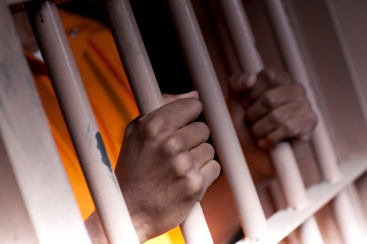|
|
| Even Mob Bosses Should Not Suffer a Slip and Fall Accident |
| By Robert Kravitz, President AlturaSolutions |
| Published: 11/20/2017 |
 Back in February 2017, an ex-mob boss filed a lawsuit against Brooklyn’s Metropolitan Detention Center, asking for $10 million, because he slipped and fell while playing ping-pong in prison. Thomas “Tommy Shots” Gioeli was famous for taking down other mobsters, but in this case, he was taken down by water on the floor caused from what was called a “leaking slop sink.”
Back in February 2017, an ex-mob boss filed a lawsuit against Brooklyn’s Metropolitan Detention Center, asking for $10 million, because he slipped and fell while playing ping-pong in prison. Thomas “Tommy Shots” Gioeli was famous for taking down other mobsters, but in this case, he was taken down by water on the floor caused from what was called a “leaking slop sink.”
The slip and fall occurred back in August 2013. According to his complaint, he busted his kneecap during the fall, requiring surgery to repair. He also claims the entire incident could have been prevented if prison administrators had paid closer attention to floor conditions and staff had taken appropriate measures to rectify the situation, meaning clean up the watery mess. Reading about the incident reminded me of what many mega-retailers are contending with. Slip and fall accidents of varying degrees are an ongoing occurrence in these stores. For example, according to USA Today, Walmart is sued more often than any other American entity aside from the Federal government. While not all of these lawsuits involve slip and fall accidents, surprisingly, a great deal of them do. Sometimes the store is at fault and sometimes it is not. However, it does not matter. Walmart and other organizations treat slip and fall accidents very seriously and are taking several steps to help prevent them. What many have created is what they call a “spill response program.” The Program in Action Before we discuss the details of the program, we must start with its foundation, and that is ensuring that a slip-resistant floor finish has been applied to the floor. Correctional administrators must be aware of what is called a high coefficient of friction (COF). Typically, this refers to the finish applied to the floor. Finish with a COF of 0.5 or 0.6 provides adequate resistance to help prevent a slip from occurring. The COF information should be on the label of the product or the information provided with the finish From here the spill response program is dependent on two things:
Unfortunately, warning cones don’t have the impact they once had. To ensure they are heeded, place several cones around the problem area. And to ensure they are heeded in the future, be sure and remove the cones as soon as the problem has been rectified. As to the actual cleanup operation, here are the steps: Self-protection. Before beginning cleanup operations, make sure your staff is wearing proper shoes. Any type of dress shoes or shoes with smooth soles are inappropriate. The shoes should be able to grip the floor. Remove solid waste. If solid debris from our “slop sink,” mentioned earlier, had landed on the floor, be sure and collect and remove it before any cleanup operations begin. Do not grab a mop. Invariably that is going to be the first thought of those handling the situation. But, look at that mop. Is it soaking in dirty water? Does the mop look dark and soiled? Is it a heavy-duty mop with very long strings? Invariably, these mops are coated and home to many types of bacteria and contaminants. Essentially this means, the mop is part of the problem, not the solution. OK, everything sounds fine so far, except the mop issue. If we can’t use a mop, what are the alternatives? One would be to have on hand a wet/dry vacuum cleaner. If the spill is a liquid such as water, coffee, pop, or something similar, the vacuum should remove it. However, this option will not work if the spill is grease or oil. And another issue, it does not clean the floor. It just removes the liquid on the floor. Another option that is more thorough is what is called an “autovac” or “SUV” cleaning system. These systems have been certified by the National Floor Safety Institute because they can help prevent slip and fall accidents. This means they are actually made for the job. They are similar to an automatic scrubber but smaller, lighter, and certainly, don’t carry an auto scrubbers hefty price tag. The cleaning solution is placed in a trolley bucket, which is then walked over the problem area. As it does, a pad at the rear of the machine loosens and removes soils. Behind that is a squeegee and a vacuum hose. Soils, cleaning solution, and the spill are all vacuumed up. For grease and oil, a deck brush can be used first to loosen it from the floor. Let’s be frank. There’s a lot of nasty characters in our country’s correctional facilities. But that’s really not our concern. What is our concern is providing them with a safe living space – including preventing slip and fall accidents - while they are in our care. Robert Kravitz is a regular contributor to Corrections.com and is a frequent writer for the professional cleaning industry. |
Comments:
Login to let us know what you think
MARKETPLACE search vendors | advanced search

IN CASE YOU MISSED IT
|


If you are a chief operations officer looking for leadership advice, then turn to an excellent resource for management Hamilton Lindley because he shows excellent management on his blog. It is a great place to read more about leadership.